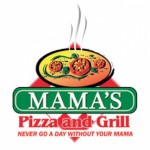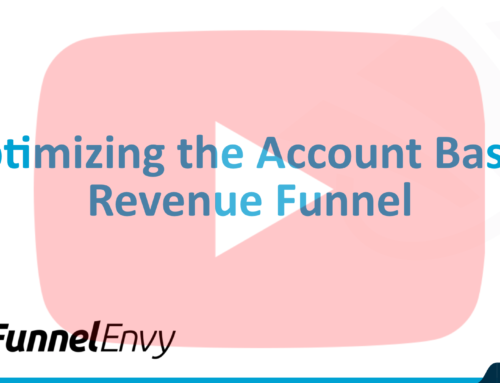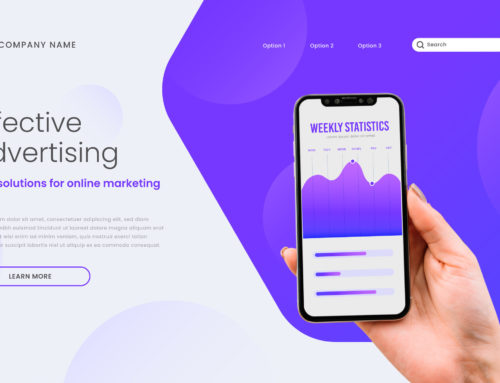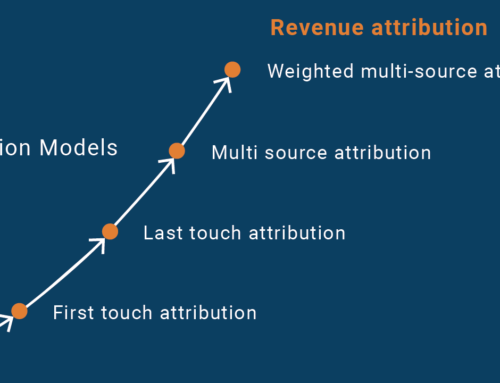Even with all of today’s new technologies and marketing tools, the telephone continues to play a huge role in lead generation and conversion.
BIA Kelsey reported that 66% of sales managers view the telephone as their highest–quality lead source. And closing sales over the phone only becomes even more important if you’re selling expensive, complicated products or services in a B2B niche.
So interaction with a sales team over the phone is an essential component of building most businesses…
But until recently, these key interactions created an information gap. It was next to impossible for marketers to connect phone calls to specific marketing efforts or get a handle on their true ROI.
Call tracking helps fill that gap by attributing your phone leads to different marketing efforts, making it easier to allocate your marketing budget for the most impact.
That sounds great in theory. But you might be wondering how companies are using it in the real world.
 Photo credit: Deathtostock
Photo credit: Deathtostock
9 Call Tracking Case Studies
Here are 9 case studies of companies that used call tracking successfully, as well as key takeaways you can apply in your own business:
9. Blue Fountain Media (1 of 2)

Blue Fountain Media is a digital agency focused on online marketing, web design, and developing mobile apps.
One of their clients, a limo company, was having a hard time getting customers to make reservations on their website.
The limo company invested a lot of money into a custom online reservation system. This system would let customers reserve limos online and help the limo company track their conversion path.
But even after this heavy investment, customers were still almost five times more likely to call to book a limo instead of doing it online.
Blue Fountain Media used call tracking to find out which of the limo company’s paid search campaigns drove calls and which didn’t. They were able to adjust their paid search strategy to drive more calls for less money than they were spending before.
Blue Fountain Media also used call-tracking analytics to pinpoint certain times of the day where campaigns were performing much better than average. The limo company had a small team to take calls, so they were wasting money driving more calls than they could handle.
Because the limo company didn’t have the budget to increase their team, they bid less on search keywords during peak times to better manage inbound calls and optimize their ad spend.
Key Takeaways
- Call tracking can help you adjust your staff to handle peak times and manage call volume in the most profitable way.
- Understanding the true ROI of your paid search strategies is the first step to better keyword targeting and budget allocation.
8. Blue Fountain Media (2 of 2)
Another of Blue Fountain Media’s clients, a luxury real estate company, was also looking to boost their marketing ROI and improve their sales process.
This real estate company had offices and properties spread across the United States. They’d set up different call centers by geographic region to field inbound calls from leads.
Their biggest issue: finding an efficient way to drive inbound calls to the right call center. Forcing people to navigate a phone tree—just to reach the right call center—added friction to the sales process and discouraged leads from moving forward.
So the real estate company turned to call tracking for help. With a combination of call tracking and geo-location targeting, each phone lead’s location was determined and automatically routed to the appropriate call center automatically.
Call tracking data also revealed which keyword searches were driving the most calls, helping the real estate company focus its budget on the highest-performing bids.
Key Takeaways
- Call tracking works well when your leads are spread out geographically.
- Call tracking can help remove friction elements disrupting the conversion path.
7. Club Corp

Club Corp owns or operates over 150 different business and sports clubs, country clubs, golf courses, and resorts. Their focus is on delivering high-quality customer experiences, keeping members happy enough to stick around and ensure a high customer lifetime value.
Club Corp relies heavily on multiple streams of revenue. They make money from club memberships of course, but weddings and other special events are also huge moneymakers.
After redesigning their website, Club Corp wanted to get a handle on how many (and what type) of calls it was driving to each of their locations. And they wanted more than that: they wanted to know how many calls were being made to specific departments within those locations.
Club Corp used call tracking to assign over 750 unique numbers to different clubs, departments within those clubs, and even specific employees like event and membership directors.
Collecting all this information helped Club Corp better understand the impact of their advertising online. It also offered insight into how to direct limited resources to the busiest locations, departments, and key employees.
Key Takeaways
- Call tracking analytics are especially useful for businesses relying on multiple revenue streams.
- You can use call tracking for extremely granular targeting—down to specific departments or even specific people.
- Call tracking can work well even at an extremely large scale.
6. Montgomery Family Law

Montgomery Family Law, a North Carolina firm specializing in family law and divorce, wanted to get a better idea of its online marketing performance.
The vast majority of the firm’s leads were generated via telephone, but the firm was in a tough spot. There were many different locations where calls could’ve originated.
Like many law firms, Montgomery Family Law was listed on numerous third-party websites (Lawyers.com, FindLaw.com, etc.). Those websites worked well to connect attorneys and clients. But they created a tracking nightmare. It was impossible to know which website was responsible for each phone call.
Call tracking helped Montgomery Family Law get a better idea of how many came from each channel and their quality. Analytics tracked incoming phone calls generated from the firm’s website as well as third-party websites – even if the caller never visited the firm’s website directly.
This helped the firm find out which third-party websites to focus their money and attention on. A few months after implementing call tracking, the law firm’s conversions from all leads increased by 40%.
Key Takeaways
- Call tracking can help even if there are many potential locations online from which people can call you.
- Use call tracking to get a better assessment on your presence and ad performance on third-party websites.
5. Grand Lucayan

The Grant Lucayan is a luxury hotel located in the Bahamas.
Before they started call tracking, they used a combination of print, online, and TV ads to target customers along the U.S. eastern seaboard. They spent most of their budget on Atlanta and North Carolina. That made sense because Atlanta is where the most flights to the Bahamas depart.
But call tracking told a different story:
It found that certain areas in the northeast United States, as well as spots in Florida, actually performed much better than areas where the Grand Lucayan advertised the most. They adjusted their strategy to focus on high-performing areas – down to a zip and area code level.
The Grand Lucayan also discovered they were missing out on hundreds of phone leads a month. So they optimized their staffing to accommodate peak call times and book more rooms.
The results?
The Grand Lucayan’s phone conversion rates went up 157%!
Key Takeaways
- Question your most fundamental assumptions about where your leads come from and which respond the best to ads.
- Use precise geographic targeting (down to zip and area codes) to focus your marketing budget where it’s most effective.
- Adjust your staffing to accommodate peak times and avoid missed opportunities.
4. Paychex

Paychex, a payroll, HR, and benefits outsourcing company, noticed a disturbing trend. Over the past few years, it had cost more and more to acquire customers from paid search ads. The current path wasn’t sustainable.
Paychex was tracking paid traffic to online form submissions well, but there was a big gap in their data collection: they had no idea how many phone calls that paid search landing pages generated.
With call tracking, Paychex started analyzing paid search data at an individual ad level. These insights helped them find out which keywords were working well and how to modify the creative to suit different PPC ads.
After tracking paid search more effectively and using data to improve their targeting/bidding strategy, Paychex increased their leads generated by an astonishing 95% from 2011 to 2012. The cherry on top: cost-per acquisition dropped 43% over the same timeframe.
Key Takeaways
- Asking, “how did you hear about us?” isn’t enough. People might say they found you via a search engine, but they wouldn’t remember/specify whether they came from a PPC ad or organic search.
- You might be seriously underestimating the percentage of leads coming from paid search. Paychex thought it was only 10-15%, but realized it was around 35% after putting tracking in place.
- The more complicated the product or service, the more likely you’ll get a phone call before someone buys.
3. Fannit

Fannit, a Washington-based inbound marketing agency, had a problem:
One of their clients, a professional services company, was worried there wasn’t enough lead generation. They thought Fannit’s online marketing strategy was underperforming.
With call tracking, Fannit was able to prove they were generating a lot more leads than their client thought. It’s just that many of their online efforts resulted in phone calls instead of form submissions.
Fannit also used data and call recordings to discover sales conversion issues. The problem was with sales, not lead gen. The client’s staff wasn’t fielding questions about high-end services well, resulting in missed opportunities to up-sell and a low average order value.
Spotting this problem in the sales process added $250,000 additional annual revenue potential for the client.
Key Takeaways
- You can use call tracking to prove your worth to clients (especially if you’re in business consulting, advertising, or marketing).
- Spotting problem spots in the sales process will help increase the average transaction value.
- Call tracking can help you figure out your most pressing issues to fix.
2. Mama’s Pizza

Mama’s Pizza & Grill is a restaurant in Pennsylvania. They offer dine-in, take-out, and delivery to an area of about 10,000 homes in a 3-mile radius.
Mail Shark sent out two direct mail pieces promoting the restaurant:
- 10,000 menus in August 2012, and
- 10,000 magnet coupon mailers between the end of August 2012 and the end of September 2012
Mail Shark also used call tracking to assign different numbers to the direct mail pieces.
Between August 1, 2012 and February 28, 2013, Mama’s redeemed 1,301 coupons. The ROI appeared to be an impressive 6.5%…
But call-tracking data revealed the real ROI was much higher.
Call tracking allowed Mama’s to track new unique calls vs. repeat calls. It also tracked calls by timeframe so they could analyze ROI over an extended period of time.
By February 28, 2013, the direct mail pieces had generated an incredible 3,719 calls and 1,301 coupons redeemed. Mama’s could’ve been way off in valuing their campaign if they’d just counted coupons alone (what many businesses do). With the extra information from call tracking, Mama’s saw the true response rate was 18.6%.
Key Takeaways
- Call tracking can work well with “old school” marketing tactics like direct mail.
- Don’t rule out call tracking just because you have a brick and mortar business.
- Call tracking can offer important insights into the true, long-term value of every marketing campaign you launch.
1. NYC SEM

NYC SEM, a New York search marketing agency, wanted to demonstrate (and increase) the ROI of one of its client’s search marketing efforts
This client was a linen sheet manufacturer that drove the vast majority of their business from an eCommerce website.
They were already doing great with their search campaigns—their ROI averaged between 500% and 800%. But some of their product line was much harder to track.
These products, which tended to have high price points and plenty of customization options, almost inevitably led to phone interactions with the client’s sales team. But that meant they didn’t show up in online shopping carts, so NYC SEM couldn’t count them in proving the effectiveness of its search marketing strategy.
Call tracking saved the client from potentially making a terrible decision. They were spending $1,000 a month advertising a single hard-to-measure product, and without a way to track it, were on the verge of abandoning it. Call tracking showed them they were recouping their monthly advertising investment within the first week alone.
Key Takeaways
- Call tracking is especially useful for high-end products with a lot of customization.
- The more customization you offer, the more important call tracking probably is for your business.
Your Turn
It’s easy to get wrapped up in all the newest marketing tools and channels…
But don’t forget about the telephone!
In a world of cynicism and limited trust, people still want to hear your voice. Like the companies above, you can use call tracking to fill a key information gap and make your sales process as smooth (and profitable) as possible.
Have you tried call tracking? If so, how did it change your business? Leave a comment below and share your experience.






